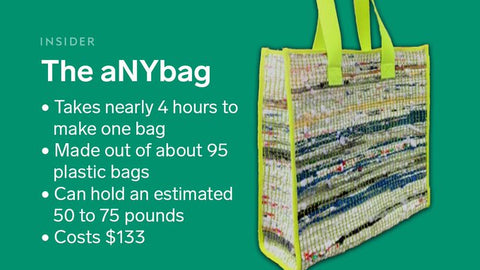The $133 designer bag made from trash
by Alexander Dabagh
·
New York City used to go through 23 billion plastic bags per year before banning them in 2020. As New Yorkers adjust to the ban, one designer is turning single-use bags into luxury totes. Can this help reduce worldwide waste?
The idea to make totes out of plastic bags came to Alex Dabagh one night when he was taking out the trash.

Alex and his team start by separating plastic bags by size. They fuse the bags together using a heat sealer and cut them into long strips. They spool the strips into something like yarn, which is then woven together using a handloom.

It takes about 95 plastic bags to make the aNYbag, which is short for "a New York bag." In the beginning, Alex collected plastic from friends and family. But he's now partnering with fashion retailers and schools to collect their unwanted plastic.

The aNYbag's $133 price point might seem steep, but Alex markets it as a luxury item.

The common grocery bag is made of a polyethylene plastic. In many ways, it's a brilliant invention — it's thin, stretchy, strong, and cheap to make. Today, we go through 1 trillion bags worldwide every year. Less than 10% of them are ever recycled.

Plastic bags are one of the most commonly littered items on the planet. They're light and easily shredded, which means they can wreak havoc on animals and ecosystems alike.

In the US, eight states have passed some form of bag ban. And while New York is one of those states, plastic bags are still everywhere. There are exemptions to the ban for things like takeout food, prescription drugs, newspapers, and garment bags.

So do these bans actually reduce waste? California was the first US state to enforce a plastic bag ban in 2016. Research published in 2019 found thin plastic bag use was down by more than 70%

Instead of using plastic bags, Californians spent more on paper and sturdier plastic bags. There's always totes bags, which certainly last longer, but as Alex notes, they come with their own cost.



